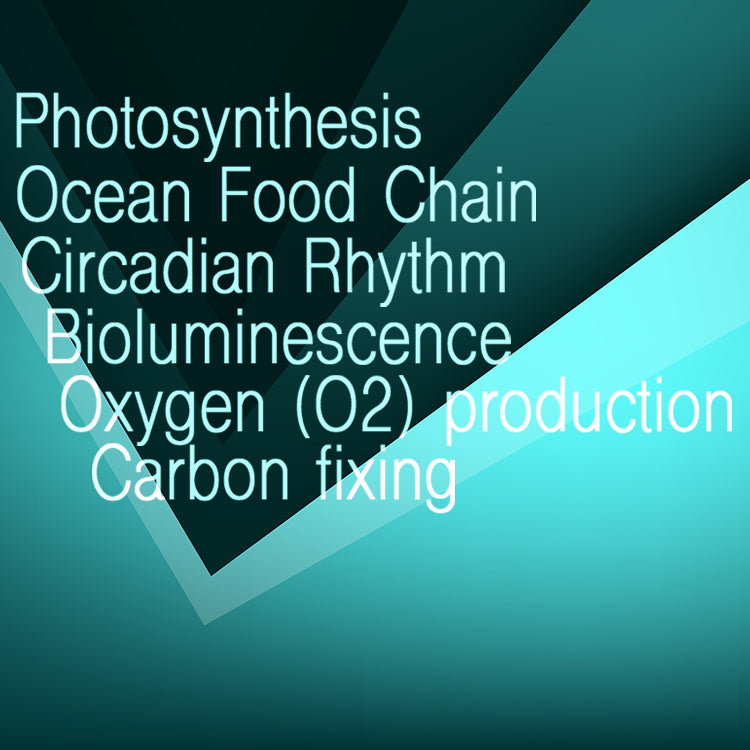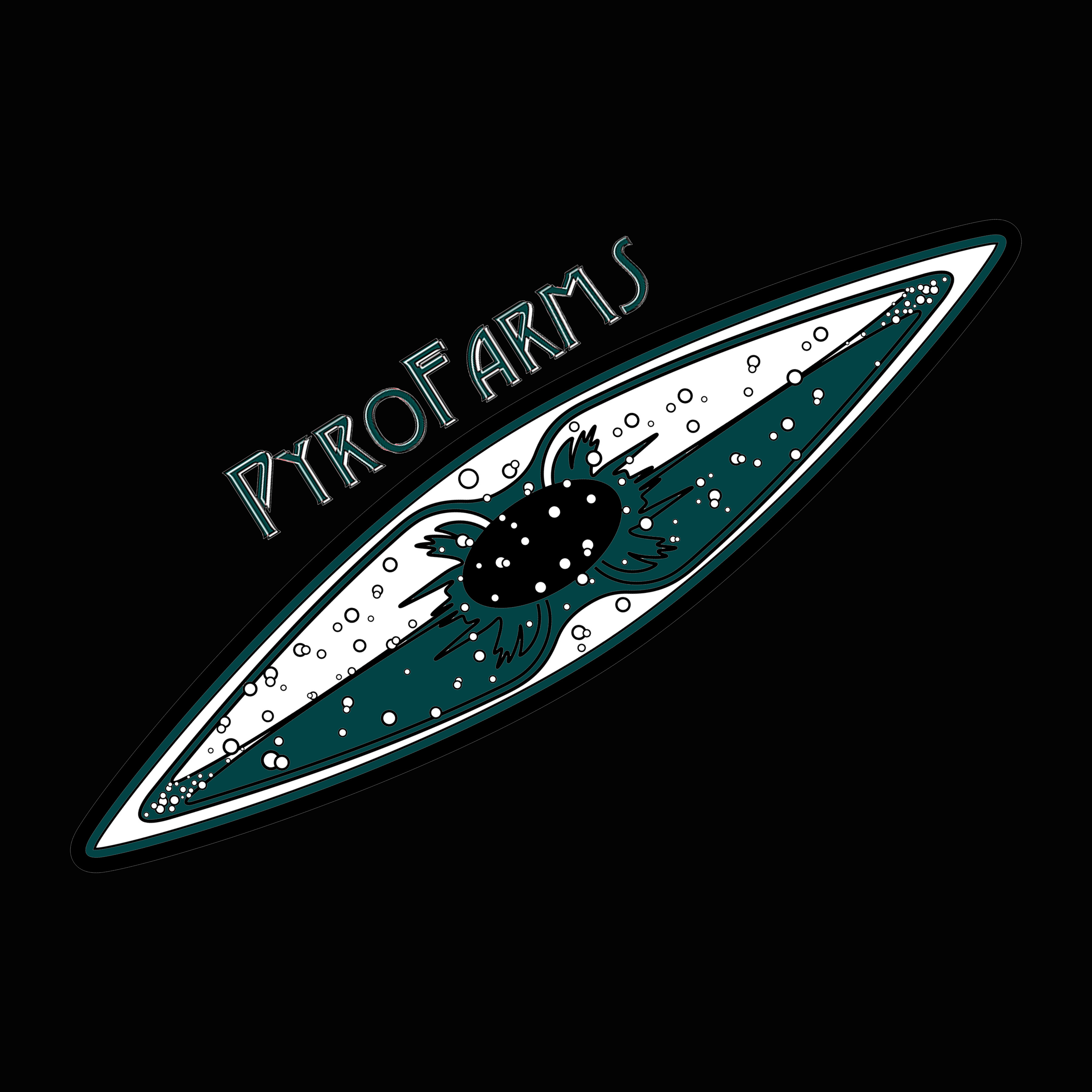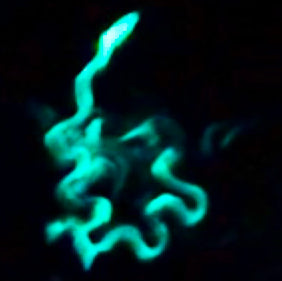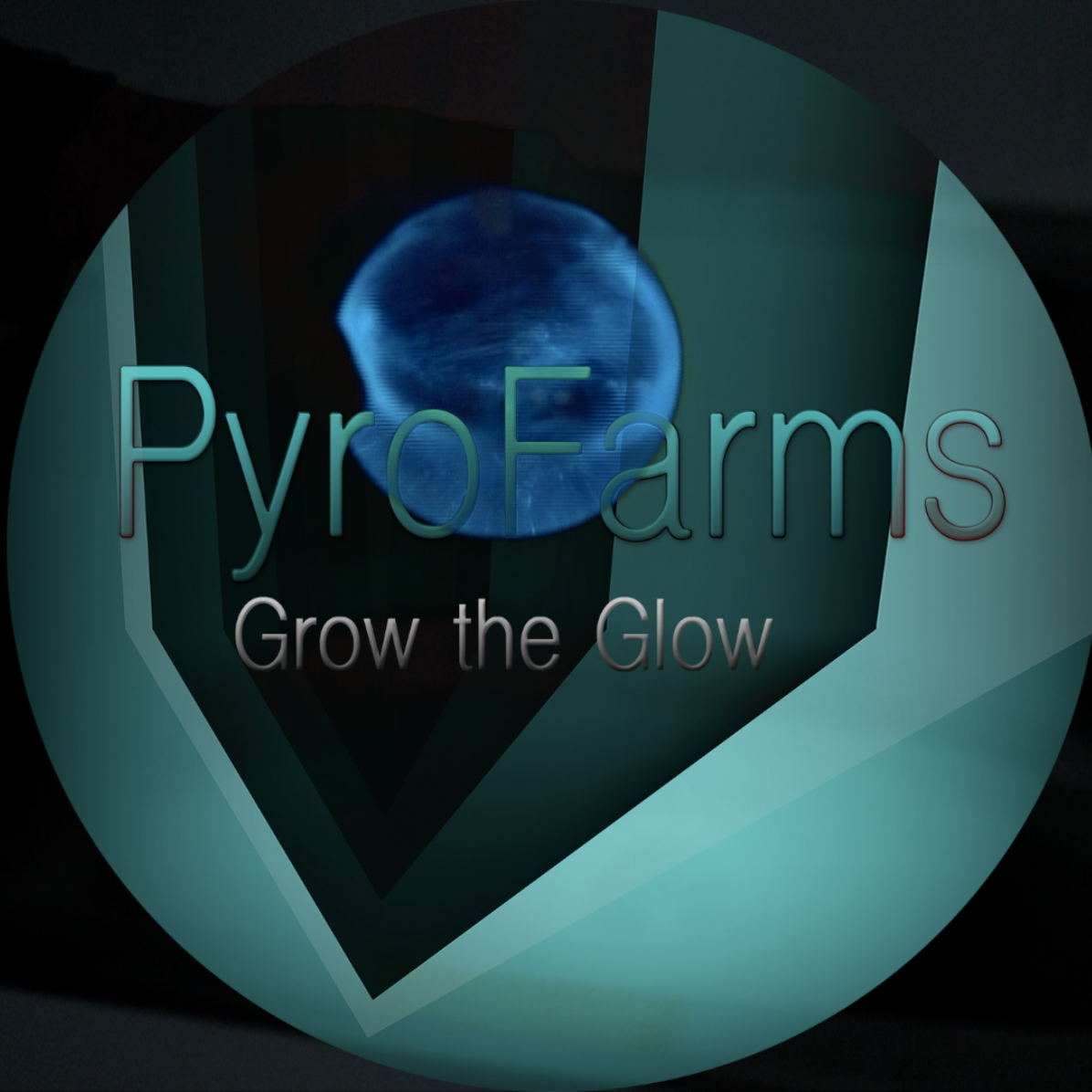Some teachable facts using PyroDinos

PyroDino dinoflagellates are part of the larger marine plankton community, specifically phytoplankton, due to their ability to photosynthesize and create energy from sunlight. They are also classified as protist which is grab-bag of single cell organisms that do not fit into any specific plant, animal, bacteria or fungus category. Our PyroDinos are the species Pyrocystis fusiformis. PyroDinos are also generally referred to as algae.
Photosynthesis: PyroDinos obtain most of their energy from the sun via photosynthesis. Photosynthesis takes in the carbon dioxide (CO2) produced by all breathing organisms and reintroduces oxygen (O2) into the atmosphere. Photosynthesis is the process used by plants, algae and certain bacteria to harness energy from sunlight and turn it into chemical energy.
Ocean Food Chain: PyroDinos like all phytoplankton are the basis for the Ocean Food Chain. All Ocean creatures, that do not photosynthesize*, rely on these photosynthetic plant plankton for their energy source in one form or another. Without phytoplankton like PyroDinos there would be little to no life in the Ocean or on this planet. (*or chemosynthesize)
Circadian Rhythm: PyroDinos have a day-night cycle that is regulated by sunlight. PyroDinos will only produce light (bioluminescence) during nighttime hours. PyroDinos can be trained and their day-night cycle changed by altering their daily lighting. This takes a few days to a week. We all have a Circadian Rhythm which guides us throughout our day-night cycle. When you travel and experience ‘jet-lag’ you are feeling the effects of your Circadian Rhythm being out of sync.
Bioluminescence: PyroDinos produce a natural blue light at night when disturbed. This natural light is called bioluminescence. Bioluminescence is a reaction that produces light energy within an organism's body. The reaction occurs when luciferin, a molecule that, when it reacts with oxygen, produces light. Usually this reaction includes a catalyst, luciferase, which helps to optimize the reaction.
Oxygen (O2) production: PyroDinos produce fresh oxygen as by-product of photosynthesis. The ocean’s phytoplankton (plant-like plankton) produce more than half the air we breathe. More than all the rain forests and all the trees and grasses on this planet. As stated before, without phytoplankton like PyroDinos there would be little to no life in the Ocean or on this planet.
Carbon fixing: PyroDinos convert atmospheric carbon dioxide (CO2) into life sustaining sugars and carbohydrates. In doing this they are removing the greenhouse gas ‘CO2’ from the environment. PyroDinos combat climate change by removing CO2 and fixing it into usable sugars and carbohydrates. On ocean-sized scales this is very significant to our planet.
Pyro Products
Learn more about PyroDinos



Comments